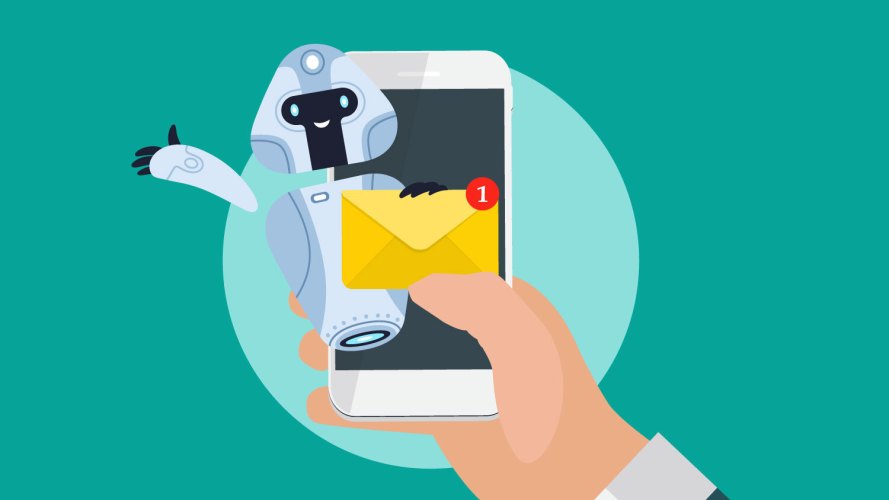How to Power Customer Experiences with AI and Sub-Sec E2E Real-Time Data Sync



Announcing Data Cloud's Sub-Sec E2E Real-Time feature. Deliver personalized experiences in real time, no matter how or where a customer interacts with the brand.
Delivering an exceptional customer experience hinges on unifying interactions across every touchpoint. Yet, many brands struggle with fragmented data spread across systems, channels, and clouds. Salesforce Data Cloud solves this challenge by ensuring a consistent customer data sync across all platforms. This allows brands to deliver personalized experiences in real time, no matter how or where a customer interacts with the brand.
We are thrilled to announce that the Sub-Sec E2E Real-Time feature of Data Cloud is now available to all customers. This groundbreaking capability allows businesses to process and analyze data as it’s generated, ensuring immediate, data-driven decisions. With Sub-Sec E2E Real-Time, brands can pair this unified, real-time understanding of an individual with intelligent machine learning (ML) and rules-based decisions from Salesforce’s Personalization solution to deliver personalized experiences across every touchpoint, enhancing customer interactions and driving better outcomes.
What you’ll learn
- What is Sub-Second Real-Time
- How does the Sub-Second Real-Time Platform work?
- How Salesforce designed the Sub-Second Real-Time feature
What is Sub-Second Real-Time?
Sub-second real-time refers to the processing and delivery of data or responses in less than one second, ensuring minimal latency and near-instantaneous results. This capability is essential for applications requiring immediate data updates, such as live analytics, responsive user interfaces, and time-sensitive decision-making.
This feature will help industries needing instant insights, such as fraud detection, predictive maintenance, and real-time marketing. By unifying data across systems, channels, and clouds, Data Cloud ensures consistent and synchronized customer data, empowering businesses to stay ahead with real-time insights.
To illustrate, let’s consider a scenario of web personalization. As a user browses items on a website, that activity data is collected and quickly used to personalize their website experience via our Personalization solution. The decisions delivered by Personalization can be rich and comprehensive due to Data Cloud’s extensive data and insights about the user and their activities across various platforms: website, point of sale, mobile, and other data sources.
All these data points are connected to Data Cloud via various connections, including ingestion and zero-copy from customer warehouses in Snowflake, Databricks, Redshift, and more. Data Cloud maintains a constantly updated 360-degree view of the user, augmenting their session activities immediately to provide comprehensive personalization in real time.
Another example is a real-time chat scenario. As the user spends time on the website, they may need service via a chat agent. The agent, whether built with Agentforce or operated by a human, has access to the complete view of the user, including their last activity on the website, all updated in milliseconds. This allows the chat agent to quickly provide the best response based on a complete, up-to-the-second view of the customer.
All this is made possible with our new offering.
How does the Sub-Sec E2E Real-Time Platform work?

The Sub-Sec E2E Real-Time platform implements a reactive event-based layer that operates on the Data Cloud data model. It processes information instantly and efficiently. This system uses a special way of organizing data called a “Data Graph.” This graph helps us understand each customer’s profile in detail, including their engagements, insights, and segment memberships. A real-time data graph is available in a high-speed cache that’s kept in sync with the main data storage (the lakehouse.) To learn more about Data Graphs, you can visit this help page.
Currently, we process web and mobile events in real time. These events are collected and stored in a data format called a “Data Lake Object” (DLO). DLOs are linked to “Data Model Objects” (DMO). We can change the data in DLOs and DMOs using special rules. We can also combine data from DMOs to get new insights.
In Data Cloud, we track customer events to identify different names or accounts that might belong to the same person. This process is called identity resolution and helps us understand customers even better.
Data about a user can also help create segments for targeting and personalization. You can trigger actions outside Data Cloud based on changes to the data in the platform. These triggers can be delivered via various marketing and personalization channels. To learn more about each of these concepts, check out Salesforce Data Cloud documentation.
We use “process definitions” to set up how data is processed in Data Cloud. These definitions control the things mentioned above, like how data is changed, how customer identities are merged, how insights are calculated, how customers are grouped, and what actions are triggered. These definitions are part of the Data Cloud model and work the same way, no matter if you’re using batch processing, streaming, or real-time processing. This lets you create a consistent way to work with data across all types of Data Cloud APIs. However, not all process definitions can be used with every type of processing.
To be specific, process definitions available in real time are, by design, constrained to be simple and event-oriented. These process definitions can also be used with slower processing methods like streaming and batch processing in the Data Lake. The reverse isn’t true: not all batch processing definitions will be handled in real time. This asymmetry is by design. Real-time processing needs to be fast, based on events, and sensitive to delays. So, processing large amounts of data at once isn’t suitable for real time.
To summarize, the Sub-Sec E2E Real-Time platform powers this transformation through the following key features:
- Real-Time Data Graph: A Customer 360 profile is created using a simplified data structure that includes the most important information for brands. This helps us process data quickly and provide useful information and insights almost instantly.
- Real-Time Ingest and Transform: Ingest user events and profiles in milliseconds from web and mobile sources.
- Real-Time Identity Resolution: Merge customer profiles across devices, unifying unknown and known users instantly.
- Real-Time Calculated Insights: Calculated metrics like lifetime value (LTV) or user visit history are updated in milliseconds to create personalization or offers for web, chatbot, or service agent.
- Real-Time Segmentation: Segment audiences on the fly, personalizing messages and interactions in real time.
- Real-Time Actions: Empower brands to evaluate every user engagement and act via Salesforce Flow or other relevant communication channels.
How Salesforce designed the Sub-Sec E2E Real-Time feature
In Data Cloud, we built a new real-time pipeline for sub-second data processing. As fast interactive data is ingested from web and mobile channels, it goes through a series of rapid processes.
Our web and mobile software development kits (SDKs) collect data from web and mobile applications and send it to our beacon server. This data is then routed to the Real-Time Layer for millisecond processing and the Lakehouse Layer for integration with batch/streaming data. Once the data is in the Real-Time Layer, it goes through the following processes before getting updated into the Real-Time Data Graph:
- Simple Ingest and Transformations: The data is ingested and transformed for further processing.
- Identity Resolution: To identify customers, we use a set of rules that match profiles based on various factors. This means that data specialists don’t need to create new rules specifically for real-time processing.
- Computed Insights: We analyze each customer interaction and quickly calculate basic information. This updated information is then stored in our real-time data graph.
- Real-Time Segments: Engagement data is evaluated to determine if it meets the criteria for defined real-time segments, and users are added to qualifying segments in milliseconds.
- Real-Time Actions and Triggers: We analyze each customer interaction and compare it to specific rules. If a rule is met, we immediately take action that affects a group of customers.
- Real-Time Data Graph and API: Real-Time data graph, which also includes a real-time API, allows brands to retrieve updated JSON-format data for each user, ensuring that all customer interactions are informed by the most updated data.
Integrating Lakehouse and real-time platforms for seamless data consistency
While real-time processing is critical, it’s equally important to ensure that batch and streaming data are also integrated. As data flows through the system, it is simultaneously sent to the Lakehouse Layer. All real-time data is reprocessed alongside batch, streaming, and federated data to ensure consistency across all datasets. The processed, holistic data is pushed to the Real-Time layer via Lakehouse Data Graph. This dual-layer approach guarantees that the Real-Time Data Graph is always in sync with the broader data ecosystem, providing a complete and up-to-date view of each customer.
Real-Time Data Graph & API: The foundation of real-time processing
The Real-Time Data Graph is the foundational layer that makes real-time functionality possible. A data graph is a structured way of organizing data that includes all the information selected by data specialists. This information is stored in a format called JSON. All this data is made available to Salesforce Cloud Applications and external systems within milliseconds.
Whether you’re interacting with a customer agent, chatbot, website, or messaging platform, the Real-Time Data Graph ensures that all systems have access to users’ latest unified data, creating a seamless customer experience across all touchpoints.
The Sub-Sec E2E Real-Time feature of Salesforce Data Cloud will help businesses deliver exceptional customer experiences. By processing and analyzing data in real time, brands can now offer personalized interactions across every touchpoint, from web personalization to chat support. This capability not only enhances customer satisfaction but also drives better business outcomes by providing immediate, data-driven insights. Whether it’s fraud detection, predictive maintenance, or real-time marketing, the Sub-Sec E2E Real-Time feature ensures that businesses stay ahead with consistent data syncs.
Say hello to Data Cloud
Want to improve your personalization and break down silos that lead to a disjointed customer experience? Data Cloud brings it all under one platform, having all your teams working together.


































